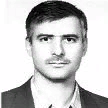International Journal of Image, Graphics and Signal Processing (IJIGSP)
IJIGSP Vol. 6, No. 1, 8 Nov. 2013
Cover page and Table of Contents: PDF (size: 345KB)
Persian Sign Language Recognition Using Radial Distance and Fourier Transform
Full Text (PDF, 345KB), PP.40-46
Views: 0 Downloads: 0
Author(s)
Index Terms
Persian sign language, hand gesture recognition, Guassian model, centroid distance, Fourier transform, Euclidean distance
Abstract
This paper provides a novel hand gesture recognition method to recognize 32 static signs of the Persian Sign Language (PSL) alphabets. Accurate hand segmentation is the first and important step in sign language recognition systems. Here, we propose a method for hand segmentation that helps to build a better vision based sign language recognition system. The proposed method is based on YCbCr color space, single Gaussian model and Bayes rule. It detects region of hand in complex background and non-uniform illumination. Hand gesture features are extracted by radial distance and Fourier transform. Finally, the Euclidean distanceis used to compute the similarity between the input signs and all training feature vectors in the database. The system is tested on 480 posture images of the PSL, 15 images for each 32 signs. Experimental results show that our approach is capable to recognize all 32 PSL alphabets with 95.62% recognition rate.
Cite This Paper
Bahare Jalilian, Abdolah Chalechale,"Persian Sign Language Recognition Using Radial Distance and Fourier Transform", IJIGSP, vol.6, no.1, pp.40-46, 2014. DOI: 10.5815/ijigsp.2014.01.06
Reference
[1]M.B. Waldron and S. Kim, " Isolated ASL sign recognition system for deaf persons," IEEE Transactions on Rehabilitation Engineering, 3, 261–271, 1995.
[2]C.S. Lee, G.T. Park and J.S. Kim, "Real-time Recognition System of Korean Sign Language based on Elementary Components ,"1997IEEE Proceedings of the Sixth IEEE International Conference on Fuzzy Systems. Vol. 3, pp. 1463 – 1468.
[3]M. AL-Rousan and K. Assaleh, "Video-based signer-independent Arabic sign language recognition, using hidden Markov models," Appl Soft Comput 9(3), 2009, pp.990–999.
[4]E. Stergiopoulou and N.Papamarkos, "Hand gesture recognition using a neural network shape fitting technique," Engineering Applications of Artificial Intelligence22, 2009, pp.1141–1158.
[5]P. Vamplew and A. Adams, "Recognition of sign language gestures using neural networks," Australian Journal of Intelligent Information Processing Systems, 1998, vol. 5, 94–102.
[6]B.L. Tsai and C.L. Huang, "A Vision-Based Taiwanese Sign Language Recognition System, IEEE International Conference on Pattern Recognition, 2010, Vol. 5, pp.3683-3686.
[7]S.A. Mehdi and Y. Niaz Khan, "Sign Language Recognition Using Sensor Gloves," Proceedings of the 9th International Conference on Neural Information Processing (ICONIP‘02), 2002, Vol. 5, pp.2204-2206.
[8]Z. H. Lee and C. Y. Tsai, "Taiwan sign language (TSL) recognition based on 3D data and neural networks", Expert Systems with Applications, 2009, vol.36, 1123-1128.
[9]K. Assaleh, T. Shanableh, M. Fanaswala and F. Amin, "Continuous Arabic sign language recognitionin user dependent mode", J Intell Learn Syst Appl 2, 2010, pp. 19–27.
[10]Q. Munib, M. Habeeb, B. Takruri and AI-Malik, "American sign language (ASL) recognition based on Hough transform and neural networks", Expert Systems with Applications, 2007, vol.32, pp. 24-37.
[11]M. Mohandes and M. Deriche, "Image Based Arabic Sign Language Recognition", the 8TH International Symposium on Signal Processing and ITS Applications, 2005, pp. 86-89.
[12]S. Kumar, D. K. Kumar and A. Sharma, "Visual hand gesture classification using wavelet transforms, International Journal of Wavelets", Multiresolution and Information Processing, 2003, vol. 1, pp. 373-392.
[13]E.E. Hemayed and A. S. Hassanien, "Edge-based recognizer for Arabic sign language alphabet (ArS2V -Arabic sign to voice)," IEEE International Computer Engineering Conference, 2011, pp.121-127.
[14]A. K. Sarkaleh, F. Poorahangaryan, B. Zanj and A. Karami, "A Neural Network Based System for Persian Sign Language Recognition", IEEE International Conference on Signal and Image Processing Applications, 2009, pp.145-149.
[15]A. Karami, B. Zanj, A. K. Sarkaleh, "Persian sign language (PSL) recognition using wavelet transform and neural networks." Expert Systems with Applications 38, 2011, pp. 2661–2667.
[16]M.P Paulraj, S. Yaacob H. Desa and C.R. Hema, "Extraction of Head and Hand Gesture Features for Recognition of Sign Language", International Conference on Electronic Design, 2008, pp.1-6.
[17]M.P Paulraj, S. Yaacob and M. Azalan, R. Palaniappan, "A Phoneme Based Sign Language Recognition System Using Skin Color Segmentation", 6th International Colloquium on Signal Processing & Its Applications, 2010, No. 4, pp. 86-90.
[18]I. Bahadori, Persian sign language collection for the deaf. Education and research office rehabilitation research group. Iran Welfare Organization, 1992.
[19]V. Vezhnevets, V. Sazonov and A. Andreeva, "A survey on pixel-based skin color detection techniques, In Proceedings of the GraphiCon 03, 2003, pp. 85–92.
[20]K.L. Tan, and L. F. Thiang, “Retrieving similar shapes effectively and efficiently,” Multimedia Tools and Applications, Kluwer Academic Publishers, Netherlands. 2003, pp.111–134.
